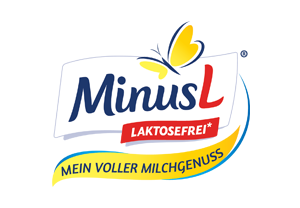
Testing & diagnosis
DETECTING LACTOSE INTOLERANCE
Typical signs of a lactose intolerance, such as abdominal pain, flatulence or a feeling of fullness, also occur as a result of other illnesses. That’s why going to the doctor is the only way to bring certainty whether a lactose intolerance exists. The lactose intolerance test for at home is suitable for an initial quick evaluation.
Do you suffer from a feeling of fullness, bloating, abdominal pain or diarrhoea after consuming milk and/or dairy products?
Do you experience symptoms of discomfort such as a feeling of fullness, bloating, constipation or nausea after consuming ready-made products and/or foods that have been prepared using food additives?
Have you been diagnosed with a chronic inflammatory intestinal disorder such as Crohn’s disease or ulcerative colitis?
After a long period of abstaining from them, have you resumed consuming milk and/or dairy products frequently and experienced symptoms of discomfort afterwards such as flatulence, abdominal pains or diarrhoea?
Are you affected by a gluten intolerance (coeliac disease)?
Do you have or have you had a bacterial or a fungal infection of the gastrointestinal tract?
Have you taken antibiotics over a longer period of time?
If you answered “No” to all the questions, then it’s quite likely that you do not have a lactose intolerance.
However, if you continue to have symptoms of discomfort, then we recommend that you consult a physician.
Lactose intolerance is suspected!
Lactose intolerance is suspected. It is essential that this suspicion receives a medical diagnosis. Please visit your doctor and clarify how this should be addressed. It is also advisable to make changes to your nutrition in the short term: Where possible, avoid lactose-containing products and switch to lactose-free alternatives. Read our chapter „Lactose intolerance & diet“ to find out what you need to watch out for.
Alongside the lactose intolerance test, a lactose-free diet gives a good impression regarding potential intolerance. This involves refraining from foods & beverages containing lactose for around 2 to 4 weeks. If the symptoms of discomfort gradually go away, this is indicative of a lactose intolerance. During this time it suggests itself to keep a food diary. It enables observations concerning symptoms and signs of discomfort to be traced back precisely and evaluated later on.

DIAGNOSTIC OPTIONS
Doctors are able to diagnose a lactose intolerance with the help of different testing procedures:
HYDROGEN BREATH TEST
The hydrogen breath test is the “gold standard” among diagnostic techniques for detecting lactose intolerance.
After the patient drinks a lactose solution, the doctor measures the hydrogen content of exhaled air at defined intervals for approximately 2 hours. Lactose that reaches the large intestine without being broken down is fermented by intestinal bacteria. Hydrogen created during the process is transported to the lungs via blood circulation and exhaled. Using the values of H2 measured the doctor can determine whether a lactose intolerance exists.
THE LACTOSE INTOLERANCE TEST USING DETERMINATION OF BLOOD SUGAR
In this test the doctor uses the level of glucose sugar in blood to determine whether a lactose intolerance exists. First the patient drinks a lactose solution on an empty stomach. Then the doctor takes blood samples at defined intervals – usually by pricking a finger. The blood glucose level rises only when the lactose is being broken down. In the case of people with lactose intolerance, the lactose is not broken down, which is why the blood glucose level doesn’t rise.
THE GENETIC TEST
In the case of the genetic test, a blood sample or cheek swab serves to verify whether a genetic predisposition towards lactose intolerance exists.
DIAGNOSIS OF LACTOSE INTOLERANCE – WHAT HAPPENS NEXT?
Once the lactose intolerance has been diagnosed by a doctor, lactose intake should be reduced to a tolerable level. But where does the lactose tolerance level lie since it’s different from person to person? A 3-step diet programme is suitable for determining this:
ELIMINATION PHASE
The aim of the elimination phase is to have the physical discomfort subside. This can take from 2 to 4 weeks. During this time all foods & beverages containing lactose are removed from the diet. Note: Gas-forming and heavy, hard-to-digest foods should be refrained from as well to relieve the burden on the gastrointestinal tract to the greatest possible extent.
Even medication can contain small amounts of lactose. Most of those affected still tolerate such amounts well. In the event of persisting symptoms of discomfort, however, the medication should be checked in terms of its lactose content and discussed with the doctor in charge.
TEST PHASE
Once the symptoms of discomfort have subsided, the individual lactose tolerance level is determined: foods & beverages containing lactose are integrated into the diet once again, gradually and in small quantities. For example, this might begin with a bit of low-lactose cheese or a few spoons of yoghurt. The amount of lactose is now increased each day. The individual tolerance level has been reached as soon as symptoms of discomfort reappear. Keeping a food and symptom diary makes it possible to precisely reconstruct later on what the amount of lactose was when the symptoms of discomfort began to appear. As a rule the test phase takes 6 to 8 weeks and merges smoothly into nutrition in the form of a steady diet.
STEADY DIET
The dietary plan is aligned to the individual lactose tolerance level. By no means should milk and dairy products be refrained from completely. The conversion to lactose-free foods & beverages helps to make the symptoms of discomfort a thing of the past. We show how this can be put into action in everyday life here.





